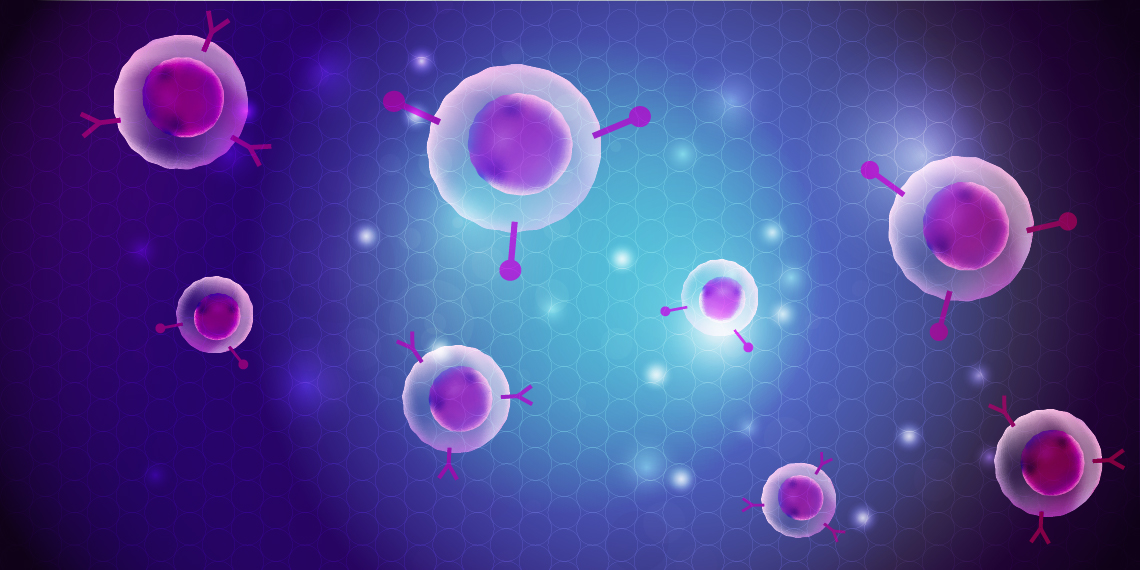Despite a tumultuous year, especially in drug development, cell and gene therapy programs continue to power forward. In late March 2021, the U.S. Food & Drug Administration approved Abecma (idecabtagene vicleucel) to treat certain adults with relapsing multiple myeloma (U.S. FDA, 2021). The therapy, developed by bluebird bio, Inc. and Celgene/Bristol-Myers Squibb, is the first chimeric antigen receptor T (CAR-T) cell therapy in the B-cell maturation antigen–targeted (BCMA) class. It’s another important milestone in the field.
The catch? With cell and gene therapies, regulatory approval is just the beginning. To get from a 128-person Phase II trial to full commercial production able to meet anticipated demand, the manufacturers must now scale up. To add to this challenge, Abecma is far from off-the-shelf. CAR-T cell treatments involve an autologous transplant, in which the individual’s T-cells are collected, genetically modified, and then reinfused back into the patient with new cancer-targeting capabilities. The patient is more or less embedded in the manufacturing process.
The safety and financial viability of cell and gene therapies like Abecma rest on a robust manufacturing and quality control program with the flexibility to scale up and out. Sensitive tools are needed to identify potential contaminants, such as microorganisms and endotoxins. Depending on the approach, scientists may also need to measure the success and safety of viral reprogramming metrics such as the vector’s productivity, purity, and biological activity. All of this needs to happen reliably and on a predetermined timeline.
Droplet Digital PCR (ddPCR) technology is one of the most sensitive biopharmaceutical quality control tools available today, offering absolute quantification of nucleic acids and other molecules in a sample. As outlined below, it can play a key role in various high-stakes steps, helping other cell and gene therapies succeed so they can benefit patients worldwide.
Detecting Contaminants
More traditional therapies, such as small molecule drugs and even antibody therapeutics, can be produced, tested, and stored in large batches that can then be dispensed to patients on an as-needed basis. The newer cell and gene therapies, like Abecma, are 100% individualized. The patient is part of the manufacturing process.
Gold-standard tests for contaminants like Mycoplasma take up to 4 weeks per batch, causing significant bottlenecks in manufacturing processes. But cutting corners on quality control can result in even greater delays if tests need to be repeated or replacement batches produced. Once a therapeutic process has begun, meeting its timeline requires a QC solution that both is efficient and offers accuracy and precision equal to or greater than those now in use.
In contrast to traditional methods, scientists can use ddPCR tools to detect contaminants and assess viral titer metrics for gene therapies in less than a day. With fewer amplification variables, there is also less need to repeat tests to confirm measurements.
In head-to-head tests, Droplet Digital PCR Systems have detected contaminants at levels that other methods, such as qPCR, have been unable to attain (Maheshwari Y et al. 2017). This enables quality control specialists to identify any issues as soon as they arise, preventing contaminant spread or production-line domino effects that can lead to catastrophic failures.
Modeling studies have shown that lowering the overall batch failure rate of a product can reduce the cost of cell therapies by millions of dollars per batch (Lopes et al. 2018). Catching potential problems early can save more millions in hardware and instrument costs. If quality control issues or questions come to light in later clinical trial phases, correcting them can require significant investment. Entire plants may need to be stripped of equipment to eliminate a contamination source, resulting in lost productivity and massive capital loss.
Low Cost, Low Waste
On a day-to-day basis, one of the costliest elements of quality control is the skilled labor required to conduct many standard tests, such as flow cytometry assays. Scientists who can perform these tasks are in short supply, so hiring large teams can be expensive.
Compared to many other technologies, ddPCR instruments are easy to use and allow for greater automation, freeing skilled individuals to perform complex data analyses and other important work. Droplet Digital PCR technology is also versatile; it can precisely detect, identify, and quantify multiple kinds of molecules. This allows companies to develop standard operating procedures across various quality control areas, thereby streamlining production processes overall and enabling optimization benefits that can lead to significant cost savings over time.
Crucially, ddPCR technology can also help manufacturers scale. Many cell and gene therapies are novel, first-in-class treatments approved based on incredibly small and focused clinical trials. To make these types of therapies widely accessible to patients and to tackle broader indications, the pharmaceutical industry needs scalable, high-throughput solutions for quality control.
Changing quality control methods after a product is commercialized can cause regulatory roadblocks. To prevent headaches down the road, companies should consider implementing technologies such as Droplet Digital PCR early in the development process. The technology can be scaled and has options for increasing throughput; for example, through the creation of multiplexed assays.
Leading with Safety
As with all other fields of medicine, the focus of cell and gene therapies is firmly on the patient. Droplet Digital PCR assays can detect dangerous contaminants in the therapeutic and address other issues, such as incorrect dosages, that might slip through the cracks with other technologies. This ensures safety and yields high-quality data that protects patients and satisfies regulators. But the most significant incentive for having the most sensitive, most precise quality control tools and methods is minimizing the possibility that any individuals will experience unnecessary or unforeseen consequences from your cell or gene therapy.
Quality control may not seem exciting from the outside, but scientists in this area take their work incredibly seriously. They know they are the last line of defense between patients and any faulty or unsafe product. Equipping these individuals with the best tools for the job benefits everyone.
Visit the Bio-Rad Droplet Digital PCR page to learn about the wide range of applications for ddPCR technology for cell and gene therapy quality control.
References
Lopes A et al. (2018). Cost Analysis of Cell Therapy Manufacture: Autologous Cell Therapies, Part 1. bioprocessintl.com/manufacturing/cell-therapies/analysis-cost-of-cell-therapy-manufacturing-autologous-cell-therapies-part-1/, accessed March 29, 2021.
Maheshwari Y et al. (2017). Application of Droplet Digital PCR for quantitative detection of Spiroplasma citri in comparison with real time PCR. PLoS One 12, e0184751.
U.S. Food and Drug Administration (2021). FDA Approves First Cell-Based Gene Therapy for Adult Patients with Multiple Myeloma.www.fda.gov/news-events/press-announcements/fda-approves-first-cell-based-gene-therapy-adult-patients-multiple-myeloma, accessed March 29, 2021.




